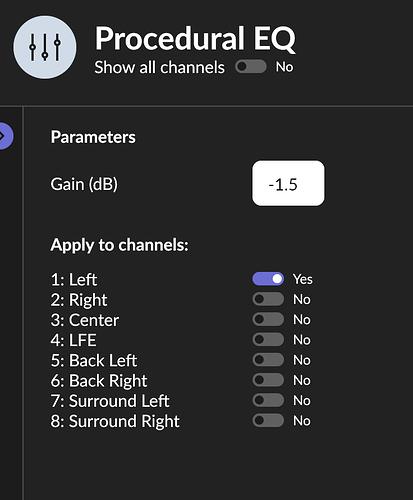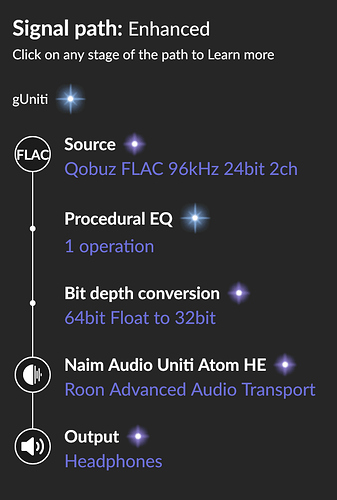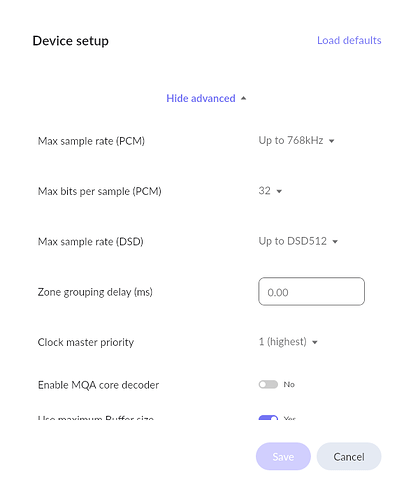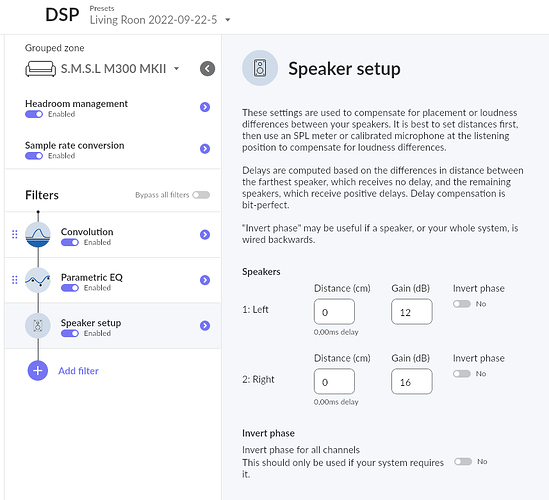I’d appreciate some extra eyes on my signal path to confirm that I’m seeing what I should bee seeing. If there’s a better way to do what I’m doing, I’d also appreciate learning about it.
The hearing in my right ear is a bit worse than the hearing in my left. I’m using a a volume PEQ filter to reduce the left channel a bit to compensate. That filter is pictured below.
The source is 96/24 in this case. When all is said and done, it’s 96/32.
In the signal path, I see the PEQ filter applied and, even though it doesn’t explicitly show a conversion to 64-bit float, I assume it’s implied. After the filter, the signal is converted to 32-bit.
So two questions:
-
Is this the best way to adjust the volume for a single channel?
-
It is expected that the resulting stream is 96/32 instead of 96/24?
Appreciate any input. Thanks!



